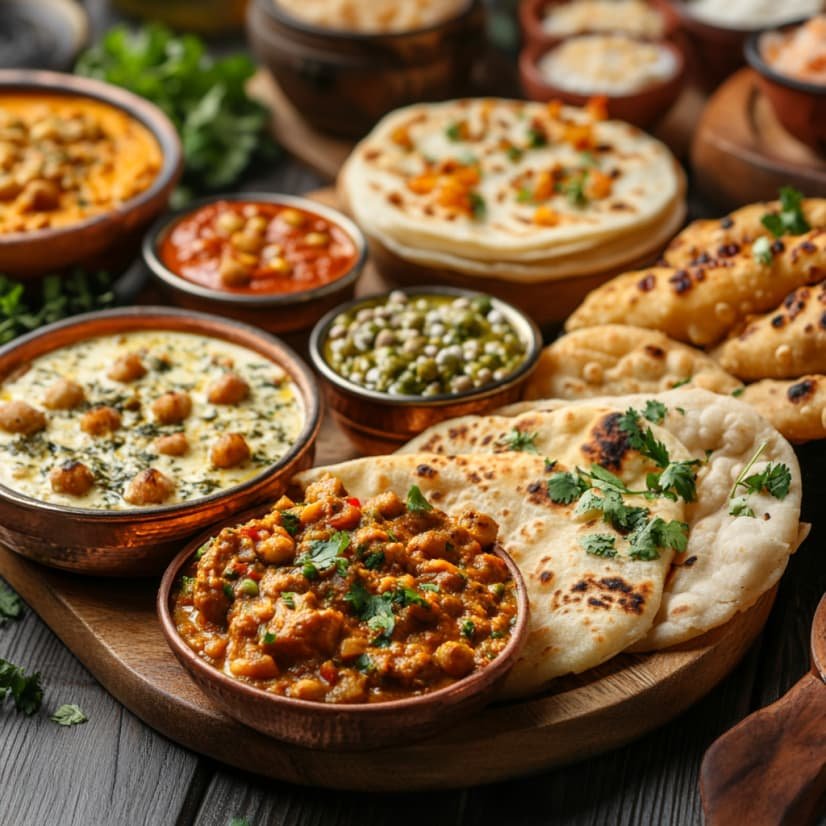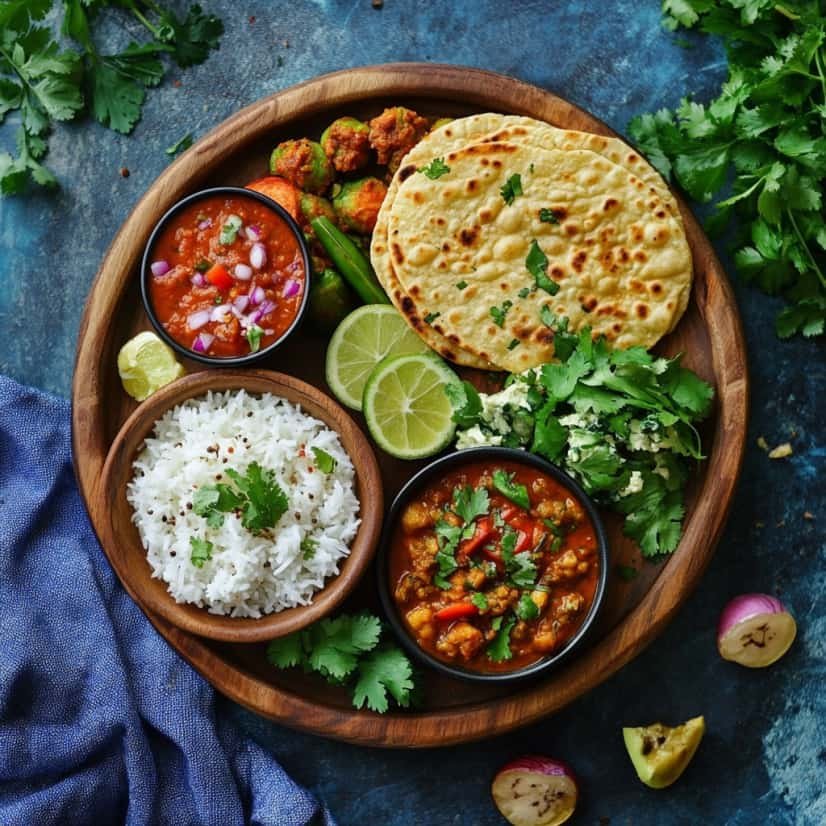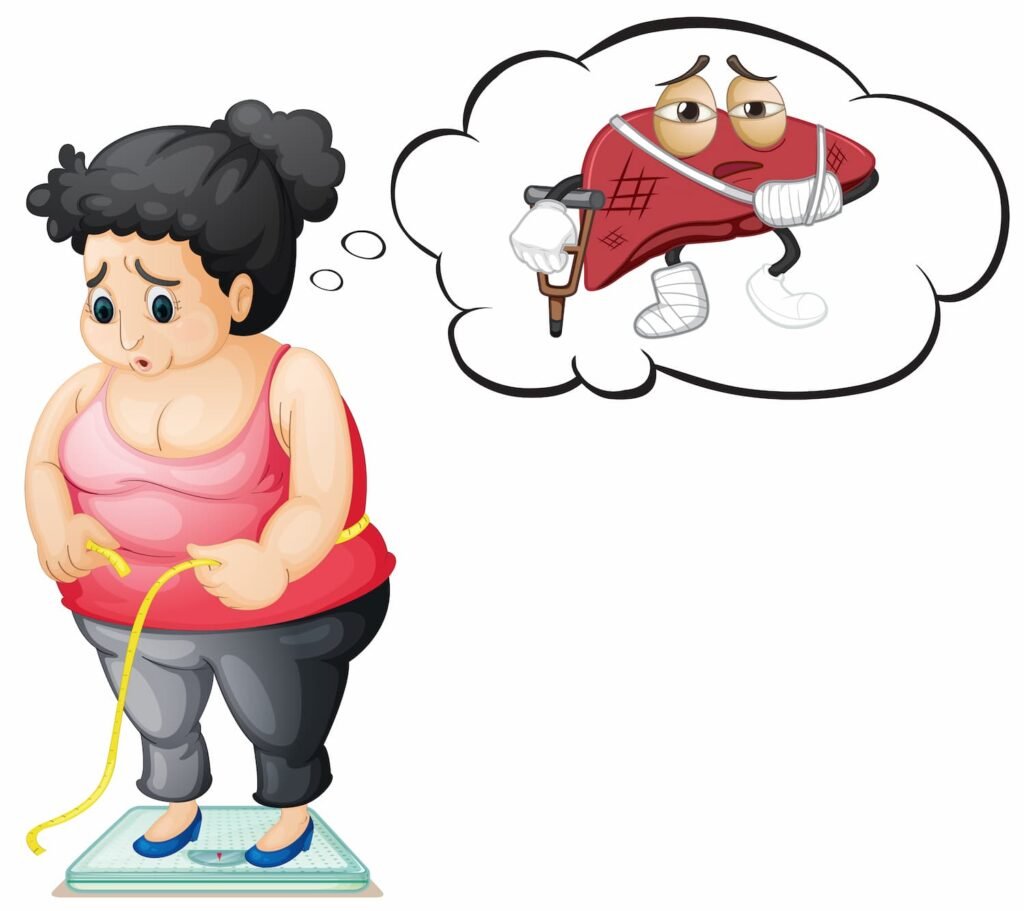Indian cuisine, rich in flavors and traditions, often conjures images of carb-heavy dishes like naan, rice, and potatoes. However, for those looking to adopt a low-carb diet, Indian food offers a plethora of options that are both delicious and nutritious.

This guide will delve into the best low-carb Indian foods, their health benefits, and how to incorporate them into your daily meals for optimal health and weight management.
Table of Contents
Understanding Low-Carb Diets in the Indian Context
Low-carb diets focus on reducing carbohydrate intake, typically to less than 100 grams per day, while increasing the consumption of proteins and healthy fats. This dietary approach helps stabilize blood sugar levels, promote weight loss, and improve metabolic health.

In the Indian context, where grains and legumes often form the dietary staple, adopting a low-carb diet can seem challenging but is entirely feasible with the right food choices.
Benefits of a Low-Carb Indian Diet

- Supports Weight Loss: By reducing carbohydrate intake, the body enters a state of ketosis, where it burns fat for energy instead of glucose. This process leads to effective fat loss while preserving muscle mass.
- Improves Blood Sugar Levels: For individuals with insulin resistance or diabetes, a low-carb diet helps in stabilizing blood sugar levels, reducing the need for medication and lowering the risk of complications.
- Enhances Heart Health: A low-carb diet can help reduce triglycerides and increase HDL (good) cholesterol levels, thereby supporting cardiovascular health.
- Promotes Digestive Health: Indian low-carb foods, such as vegetables and fermented products, are rich in fiber and probiotics, which aid in digestion and improve gut health.
Top Low-Carb Indian Foods to Include in Your Diet
Indian cuisine offers numerous low-carb options that are rich in nutrients, easy to prepare, and incredibly satisfying. Here’s a list of some of the best low-carb Indian foods to include in your diet:
Vegetables

- Cauliflower: A versatile vegetable that can be used in various Indian dishes, from cauliflower rice to gobi paratha. Cauliflower is low in carbs and rich in fiber, vitamins, and minerals, making it an excellent substitute for high-carb ingredients.
- Spinach (Palak): Low in carbs and packed with iron and other essential nutrients, spinach can be used in salads, soups, and traditional dishes like palak paneer.
- Okra (Bhindi): With its low-carb profile and high fiber content, okra is perfect for stir-fries and curries. It’s also known for its benefits in regulating blood sugar levels.
- Eggplant (Baingan): Another low-carb option, eggplant is versatile and can be used in various dishes such as baingan bharta and eggplant curry.
Proteins

- Paneer: A type of Indian cottage cheese, paneer is high in protein and low in carbohydrates, making it an ideal option for vegetarians following a low-carb diet. Dishes like paneer tikka and palak paneer are both delicious and filling.
- Chicken: Chicken, particularly breast meat, is a lean source of protein with zero carbs. Grilled chicken, chicken tikka, and tandoori chicken are great low-carb options.
- Fish: Rich in omega-3 fatty acids and protein, fish such as salmon, mackerel, and sardines are excellent choices for a low-carb diet. Dishes like fish curry and fish tikka are flavorful and nutritious.
- Eggs: A staple in many diets, eggs are versatile and can be prepared in numerous ways, such as masala omelets or egg curry.
Healthy Fats

- Ghee (Clarified Butter): A staple in Indian cooking, ghee is an excellent source of healthy fats and is carb-free. It can be used for cooking or added to dishes for extra flavor.
- Coconut Oil: Widely used in South Indian cuisine, coconut oil is another healthy fat that is low in carbs and has numerous health benefits, including boosting metabolism and improving heart health.
Fermented Foods

- Yogurt (Dahi): Yogurt is rich in probiotics, which support gut health and digestion. It is low in carbs, especially when opting for full-fat plain yogurt without added sugars. It can be consumed on its own or used in dishes like raita and kadhi.
- Pickles (Achaar): Traditional Indian pickles made from vegetables like lime, mango, or carrot are low in carbs and can enhance the flavor of any meal.
Sample Low-Carb Indian Meal Plan
To help you get started on a low-carb Indian diet, here’s a sample meal plan:
Breakfast

- Masala Omelet: Made with eggs, tomatoes, onions, and spices. Pair it with a side of avocado for a healthy dose of fats.
- Paneer Bhurji: A scrambled paneer dish with spices, tomatoes, and bell peppers. This dish is high in protein and low in carbs.
Lunch

- Grilled Chicken or Fish: Serve with a side of sautéed spinach or mixed greens. Add a small bowl of cucumber raita for a refreshing side.
- Vegetable Curry: A curry made with low-carb vegetables like cauliflower, spinach, and okra, cooked in coconut milk and spices. Pair it with a small portion of quinoa or cauliflower rice.
Snacks

- Nuts and Seeds: Almonds, walnuts, and sunflower seeds are low in carbs and make for a great snack option.
- Greek Yogurt with Berries: Opt for full-fat Greek yogurt with a handful of berries for a low-carb snack rich in probiotics.
Dinner

- Tandoori Chicken or Fish: Marinated in yogurt and spices, then grilled. Pair with a salad or roasted vegetables.
- Paneer Tikka: Cubes of paneer marinated in spices and grilled, served with a side of sautéed vegetables or a fresh salad.
Tips for Following a Low-Carb Indian Diet

- Plan Your Meals: Planning is crucial when adopting a low-carb diet. Prepare a weekly meal plan and shop accordingly to avoid last-minute temptations.
- Choose Whole Foods: Focus on whole, unprocessed foods like fresh vegetables, meats, and full-fat dairy. Avoid processed foods and hidden sugars in sauces and condiments.
- Stay Hydrated: Drinking plenty of water is essential for maintaining overall health and supporting digestion, especially when increasing protein intake.
- Incorporate Spices: Indian spices like turmeric, cumin, coriander, and ginger are not only flavorful but also have anti-inflammatory properties that can benefit your health.
- Monitor Carb Intake: Be mindful of the carb content in foods, especially when dining out or eating packaged foods. Keep a food diary to track your carb intake and adjust as needed.
Related Posts:
- How Processed Foods Cause Weight Gain?
- Exploring 15 Healthy Foods Loaded with Beneficial Carbohydrates
- Your New Favorite Drink – A Delicious Apple Shake Recipe
- Can Apple Cider Vinegar Aid in Achieving Weight Loss? A Detailed Analysis
Conclusion
Adopting a low-carb Indian diet doesn’t mean you have to compromise on flavor or variety. With a wide array of vegetables, proteins, and healthy fats to choose from, you can enjoy delicious meals while reaping the benefits of a low-carb lifestyle. Whether your goal is weight loss, better blood sugar management, or improved overall health, the low-carb Indian diet offers a sustainable and enjoyable way to achieve your health goals.